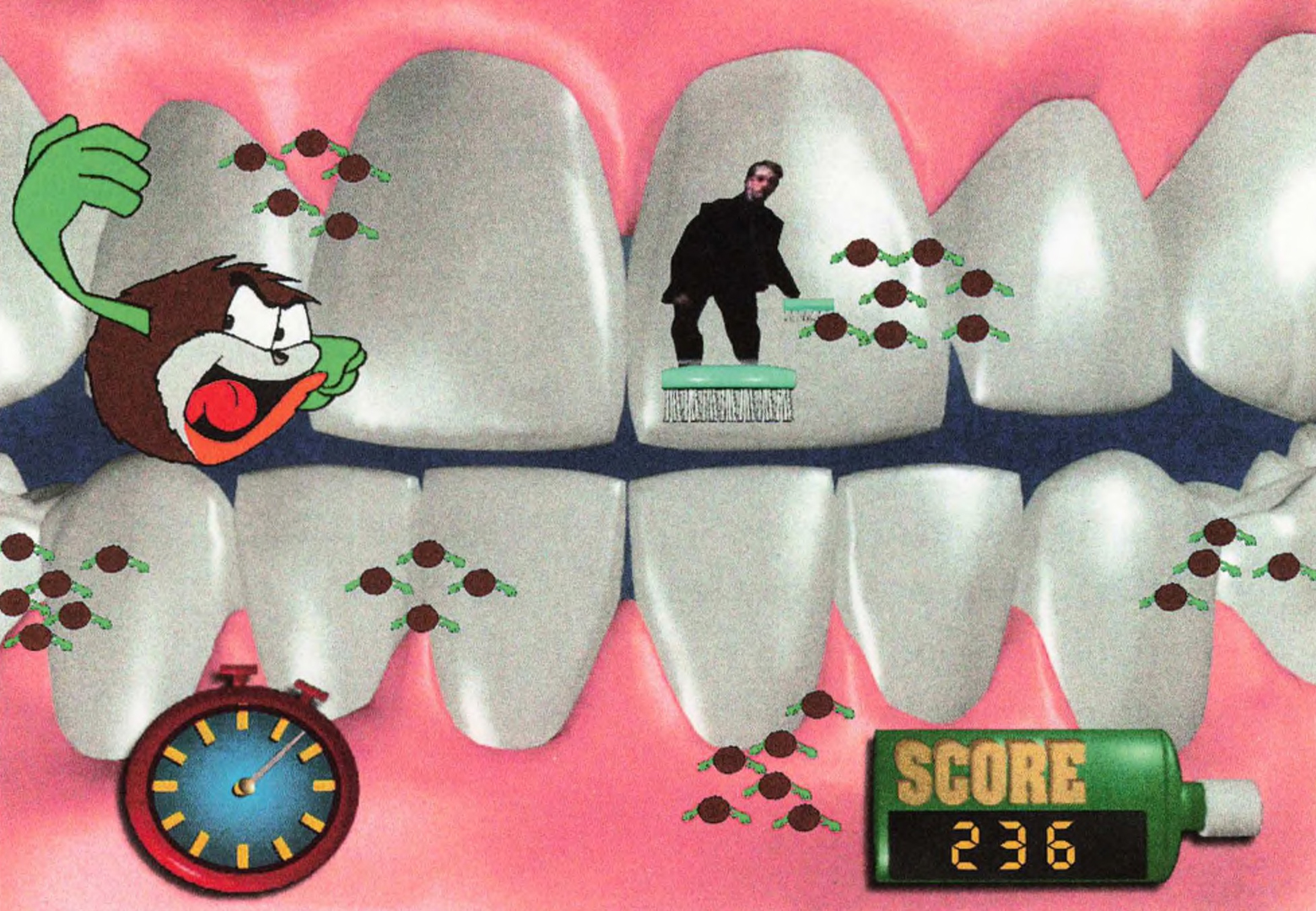“REALware VR System” by Atlas
Conference:
- SIGGRAPH 1995
-
More from SIGGRAPH 1995:


Type(s):
Entry Number: 08
Title:
- REALware VR System
Program Title:
- Interactive Entertainment
Presenter(s):
Project Affiliation:
- CCG MetaMedia
Description:
The REALWare VR system utilizes “unencumbered” virtual reality. The player interacts with the program by wearing a colored cotton glove. A video camera focuses on a chromakeyed player standing before a blue wall and inserts the player’s image into the virtual environment, which can appear on everything from a TV monitor to a projection system to a videowall. As the player moves in the virtual environment, a computer tracks the colored glove and reacts to its motion, creating an array of possible activities in the virtual world.
Watching themselves in the projected virtual environment, players can use their gloves to grab, throw, catch, move, and block objects. They can “fly” around the virtual world. They can become smaller or larger. They can engage in solo experiences or compete against a second player. When more tracking cameras are added, more players can participate. Their competition can be at the same location, or they can compete across any distance.
The REALWare Platform
REALWare runs on two 80486-based PCs, one for simulation and video control, and the other for tracking. The system has been steadily shrinking as better PC video hardware becomes available; the whole setup currently occupies a single enclosed system rack. Upcoming improvements will reduce the system to a single PC.
The simulation software was developed in-house in C++. As much as possible, the code shelters the application design- er from the hardware. Adding a new object to the virtual universe entails creating a finite-state machine that governs the entity’s behavior and attaching to it associated graphics and sounds. The simulation engine runs the state machines concurrently and handles the physics of the forces and collisions.
Optical Tracking
The optical tracking system, also developed in-house, returns the location of the centroid of the user’s gloved hand 30 times per second. Participants are scanned at the beginning of a simulation to determine the colors of their clothing. Then the system selects a glove color that has the least chroma/luminance overlap with the clothing col- ors. Color calibration is fine- tuned in a 30-second procedure in which the participant “touches” a series of virtual objects.
Tracking is sufficiently accurate to allow gesture interpretation. In Virtual Hoops, for example, dribbling the ball is accomplished by making a dribbling motion with the gloved hand, and shooting by making a shooting motion. The ball is hurled with a force determined by the speed of the hand during the throw.
Games
Virtual Hoops, a one-on-one basketball simulation, showcases the latest version of the REALWare software. In Virtual Hoops, computer-controlled opponents are high-resolution, digitized human actors who steal balls, block shots, and are generally menacing. Virtual Hoops debuted in April 1 993 at the Edge Gallery in the Franklin Institute’s Science Museum. For three weeks, visitors lined up to play virtual basketball and lingered for long periods of time. One interesting discovery during the Franklin run was that audience members actually applauded when participants did well. In the minds of the viewers, the game transcended the solitary nature of ordinary video games. They were experiencing a new kind of spectator sport that trans- formed the Virtual Hoops player into a sports star whose success was met with fan approval.
In June 1993, Virtual Hoops moved to the new Liberty Science Center in New Jersey. Its success there has been so extraordinary that CCG and Liberty Science have teamed up to take the Virtual Hoops show on the road to museums around the world. In the past two years, the game has also made enormously successful appearances at dozens of trade shows and special events, including the NBA Jam Session, the ACC Tournamania, and the NCAA Hoopla.
Plax Power is a captivating REALWare experience that allows participants to battle plaque inside a virtual mouth. The program combines computer-generated graphics and cel animations to carry the participant into the mouth to fight pesky plaque, anthropomorphized as small, hairy varmints. They become the enemy in a virtual battle to maintain oral health.
Computerized images of the Plax Control Center created the context and setup for the game. Players are scanned into the environment and reduced in size so that they can finally enter the mouth, which appears on cue. Once inside the virtual mouth, players can move around simply by pointing a hand. As the plaque creatures attack, players can dowse them with sprays of Plax mouth rinse, which loosens the creatures. Then, switching to the brush mode, they brush the loosened plaque creatures off the teeth. Players receive a score that reflects how many plaque creatures they killed within the allotted time.





